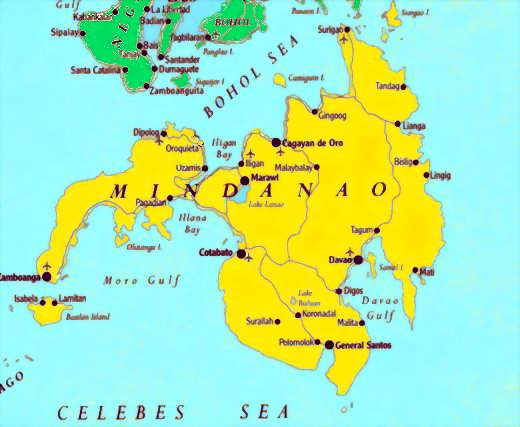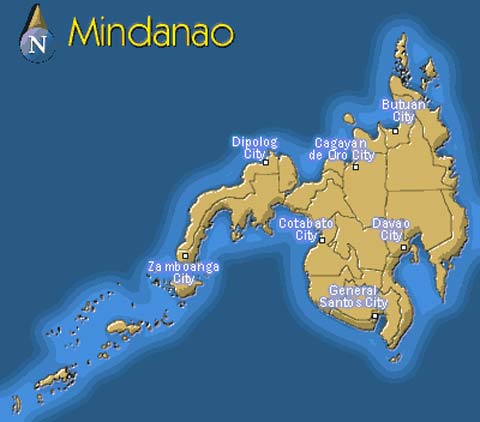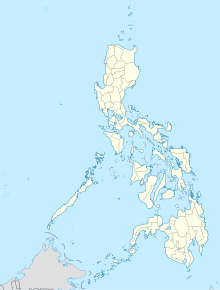
-
МјРЇСІИёСЖШИМі
-
 И№ОЫ КИОЫ Йъ ЗЛЦЎЧЯБт~ ИЎСЖЦЎ ПЙОрБюСі
И№ОЫ КИОЫ Йъ ЗЛЦЎЧЯБт~ ИЎСЖЦЎ ПЙОрБюСі 88,179
88,179 -
 [ЧЪИЎЧЩ ММКЮ] ФЋИ№ХзНК ПЉЧр 100Йш СёБтБт
[ЧЪИЎЧЩ ММКЮ] ФЋИ№ХзНК ПЉЧр 100Йш СёБтБт 38,552
38,552 -
 ИЖДвЖѓ НУГЛ - ИЎРп АјПјСЄКИ. (ЛчСј 16Рх ЦїЧд)
ИЖДвЖѓ НУГЛ - ИЎРп АјПјСЄКИ. (ЛчСј 16Рх ЦїЧд) 30,132
30,132 -
 ММКЮРЧ СіПЊСЄКИ15,125
ММКЮРЧ СіПЊСЄКИ15,125 -
 ИЖДвЖѓ БйБГ - ЕћАЁРЬЕћРЬ ПЉЧр СЄКИ13,645
ИЖДвЖѓ БйБГ - ЕћАЁРЬЕћРЬ ПЉЧр СЄКИ13,645 -
 [ЧЪИЎЧЩ ММКЮ/ИЗХК] ШЃХк МїЙк ПфБн Йз СЄКИ12,660
[ЧЪИЎЧЩ ММКЮ/ИЗХК] ШЃХк МїЙк ПфБн Йз СЄКИ12,660 -
 КИЖѓФЋРЬРЧ И№Еч И№НРРЛ КММі РжДТ ЛчСјУИ.12,536
КИЖѓФЋРЬРЧ И№Еч И№НРРЛ КММі РжДТ ЛчСјУИ.12,536 -
 ИЖДвЖѓ БйБГ - ЦХЛѓЧб ЦјЦї ПЉЧрСЄКИ12,094
ИЖДвЖѓ БйБГ - ЦХЛѓЧб ЦјЦї ПЉЧрСЄКИ12,094 -
 [ММКЮ-ЙшМБТјРх] МБЙкШИЛч РќШЙјШЃПЁПф~11,664
[ММКЮ-ЙшМБТјРх] МБЙкШИЛч РќШЙјШЃПЁПф~11,664 -
 ИЖДвЖѓ СіПЊ(ПЁИЃЙЬХИ -ИЛЖѓХз)РЧ СіЕЕ/ЧбБЙ РННФСЁ/МюЧЮИє11,558
ИЖДвЖѓ СіПЊ(ПЁИЃЙЬХИ -ИЛЖѓХз)РЧ СіЕЕ/ЧбБЙ РННФСЁ/МюЧЮИє11,558


Jump to: navigation, search
Coordinates: 8ТА00тВN 125ТА00тВE / 8ТАN 125ТАE / 8; 125
Mindanao (![]() /mɪndəˈnaʊ/ min-də-NOW) is the second largest and easternmost island in the Philippines. It is also the name of one of the three island groups in the country, which consists of the island of Mindanao and smaller surrounding islands. The other two are Luzon and the Visayas. The island of Mindanao is called The Land of Promise. Mindanao is the only area of the Philippines with a significant Muslim presence. Davao City is the largest city in Mindanao.
/mɪndəˈnaʊ/ min-də-NOW) is the second largest and easternmost island in the Philippines. It is also the name of one of the three island groups in the country, which consists of the island of Mindanao and smaller surrounding islands. The other two are Luzon and the Visayas. The island of Mindanao is called The Land of Promise. Mindanao is the only area of the Philippines with a significant Muslim presence. Davao City is the largest city in Mindanao.
Mindanao has been the site of a separatist movement by the Moro Islamic Liberation Front (MILF), caused by religious differences and widespread poverty. Fighting between MILF and Philippine forces has displaced over 100,000 people.
History
Mindanao is named after the Maguindanaons who constituted the largest Sultanate historically, and evidence from maps made during the 17th and 18th centuries suggests that the name was used to refer to the island by natives at the time. Evidence of human occupation dates back tens of thousands of years. In prehistoric times the Negrito people arrived. Sometime around 1500 BC Austronesian peoples spread throughout the Philippines and far beyond.
Islam first spread to the region during the 13th century through Arab traders from present-day Malaysia and Indonesia. Prior to this contact, the inhabitants of the area were primarily animists living in small autonomous communities.[1] The indigenous population was quickly converted and the first mosque in the Philippines was built in the mid 14th century in the town of Simunul.[1] The Philippine sultanates of Sulu and Maguindanao were subsequently in the 15th and 16th centuries, respectively. In the late 16th to early 17th centuries, the first contact with Spain occurred. By this time, Islam was well established in Mindanao and had started influencing groups as far north as present-day Manila on the island of Luzon.
Geography
Mindanao is the second largest island in the country at 94,630 square kilometers, and is the eighth most populous island in the world. The island of Mindanao is larger than 125 countries worldwide, including the Netherlands, Austria, Portugal, Czech Republic, Hungary, Taiwan and Ireland. The island is mountainous, and is home to Mount Apo, the highest mountain in the country. Mindanao is surrounded by 4 seas: the Sulu Sea to the west,[2] the Philippine Sea to the east, and the Celebes Sea to the south, and the Mindanao Sea to the north. Of all the islands of the Philippines, Mindanao and Borneo shows the greatest variety of physiographic development. High, rugged, faulted mountains; almost isolated volcanic peaks; high rolling plateaus; and broad, level, swampy plains are found there.
Culture
Mindanao is the most culturally diverse island in the Philippines where people of different languages, tribes and races meet. As a melting pot of different cultures, it creates a more distinct culture which is not present in other island groups in the country. Mindanao has been the seat of two sultanates namely the Sultanate of Sulu and the Sultanate of Maguindanao along with the most hispanized city in Asia, a considerable number of Buddhist and Taoist temples and the indigenous tribes known as Lumad people which makes it more diverse.
Cebuano is spoken by the majority of people in Mindanao. Cebuano is generally the native language in most regions, except for the Muslim areas on the west coast and among the hill tribes. Tagalog is also widely spoken among the people. Hiligaynon or Ilonggo is widely spoken in South Cotabato and a large part of Cotabato Province. English is also widely spoken.
The Spanish-based creole, Chavacano is the main language spoken in Zamboanga City. The dialect Zamboangueño Chavacano is one of the six dialects of Chavacano (whose native speakers are known as the Zamboangueño Latino).
There are still a number of Spanish speakers, most of them elderly members of mestizo families.
Muslims form the majority, with 63% of the population; Christians are 32% of the population; 5% are affiliated with other religions. The native Maguindanaon and other native Muslim or non-Muslim groups of Mindanao have a culture that is different from the main cultures of the Southern Philippines.
- ЁЄ
- ЁЄ
- ЁЄ
- ЁЄ
- ЁЄ
- ЁЄ
- ЁЄ
- ЁЄ
- ЁЄ
- ЁЄNmjNUuzXqd
- ЁЄNmjNUuzXqd
- ЁЄNmjNUuzXqd
- ЁЄNmjNUuzXqd
- ЁЄNmjNUuzXqd
- ЁЄNmjNUuzXqd















 ЧЪРкДхФФ ОпАЃЛѓДу ПРЧТ
ЧЪРкДхФФ ОпАЃЛѓДу ПРЧТ 11ГтПЌМг МвКёРкИИСЗ 1РЇ
11ГтПЌМг МвКёРкИИСЗ 1РЇ
 ГЛАд ИТДТ ОюЧаПј УЃБт
ГЛАд ИТДТ ОюЧаПј УЃБт
 ИЎОѓ ЧаБГ ЙцЙЎБт
ИЎОѓ ЧаБГ ЙцЙЎБт
 СжИЛПЁ ГЛАЁ ОЕ КёПыРК?
СжИЛПЁ ГЛАЁ ОЕ КёПыРК? УжАэАЁМККё РЬКЅЦЎ СёБтБт
УжАэАЁМККё РЬКЅЦЎ СёБтБт
 ЧіСіПЁМЕЕ ЧЪРкДхФФ!
ЧіСіПЁМЕЕ ЧЪРкДхФФ! ЧіСіПЁМ АЁДЩЧб
ЧіСіПЁМ АЁДЩЧб









 ЧЪРк ЦЏБо Ч§ХУ! ФСНУОюСі МКёНК
ЧЪРк ЦЏБо Ч§ХУ! ФСНУОюСі МКёНК



 АЁСЗПЌМіЗЮ ДйЧдАд ОзЦМКёЦМ
АЁСЗПЌМіЗЮ ДйЧдАд ОзЦМКёЦМ
































